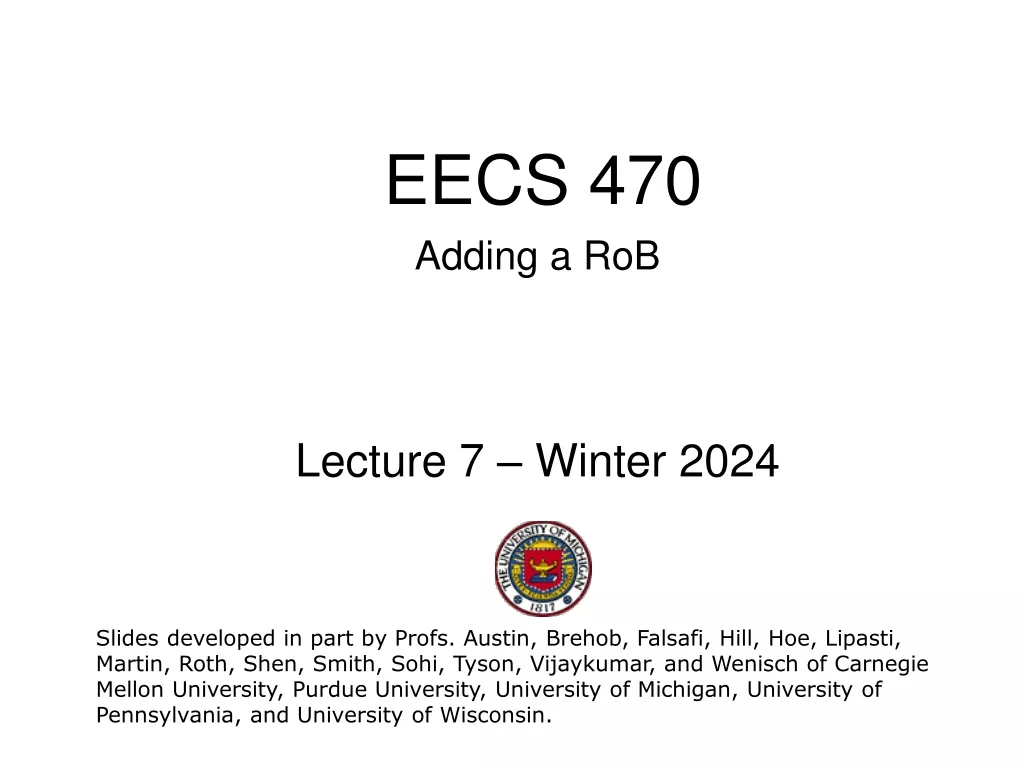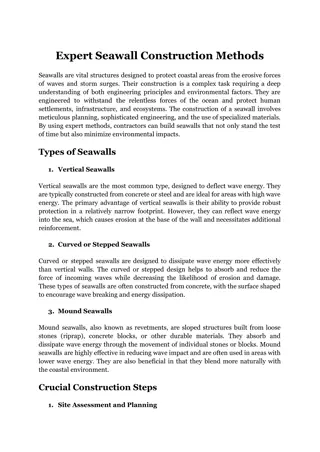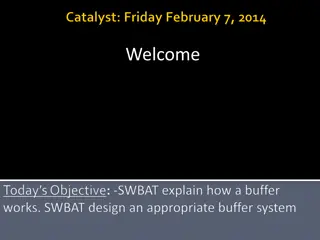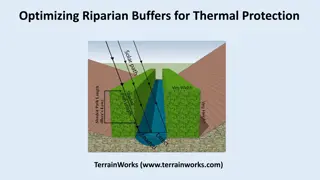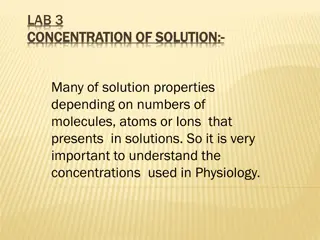Buffers: Solutions Resisting pH Changes
Buffers are solutions that resist changes in pH when acids or bases are added. They contain a weak acid and its conjugate base, maintaining pH stability. Examples and values for Ka and Kb are discussed, along with buffer solution examples. Understanding buffers is crucial in maintaining pH balance in chemical systems.
Download Presentation

Please find below an Image/Link to download the presentation.
The content on the website is provided AS IS for your information and personal use only. It may not be sold, licensed, or shared on other websites without obtaining consent from the author.If you encounter any issues during the download, it is possible that the publisher has removed the file from their server.
You are allowed to download the files provided on this website for personal or commercial use, subject to the condition that they are used lawfully. All files are the property of their respective owners.
The content on the website is provided AS IS for your information and personal use only. It may not be sold, licensed, or shared on other websites without obtaining consent from the author.
E N D
Presentation Transcript
Lecture 24 Buffers
No Class on Wednesday, 6/19 Wednesday, June 19 is an official school holiday, so there will be no discussion section and lecture on Wednesday. For the assignments, I just deleted the Wednesday assignment. We will not cover the material on weak base-strong acid titrations that was scheduled for Wednesday. Quiz 3 will be Monday, June 24. It will cover the three assignments from week 2 (Monday, Tuesday, and Thursday week 2 assignments).
Buffers (p. 96) -Buffers are solutions that resist changes in pH. When acids or bases are added to a buffer solution, the pH doesn t change much.
Buffers (p. 96) -Buffers are solutions that resist changes in pH. When acids or bases are added to a buffer solution, the pH doesn t change much. -A buffer is any solution that contains large quantities of both a weak acid and it s conjugate base. A solution containing both a weak base and its conjugate acid is also a buffer solution.
Buffers (p. 96) -Buffers are solutions that resist changes in pH. When acids or bases are added to a buffer solution, the pH doesn t change much. -A buffer is any solution that contains large quantities of both a weak acid and it s conjugate base. A solution containing both a weak base and its conjugate acid is also a buffer solution. -Any acid-conjugate base pair or base-conjugate acid pair from Tables 14.2, 14.3, and 14.4 can make a buffer solution.
Values for Kafor Some Common Monoprotic Acids Example Ka reaction for HNO2, Ka = 4.0 x 10-4: HNO2(aq) + H2O(l) or: HNO2(aq) H3O+(aq) + NO2-(aq) H+(aq) + NO2-(aq)
Buffer Examples (p. 96) 0.10 M HC2H3O2 + 0.20 M NaC2H3O2 0.50 M HCN + 0.50 M KCN
Values for Kb for Some Common Weak Bases Example Kb reaction for C5H5N, Kb = 1.7 x 10-9: C5H5N(aq) + H2O(l) OH-(aq) + C5H5NH+(aq)
Buffer Examples (p. 96) 0.10 M HC2H3O2 + 0.20 M NaC2H3O2 0.50 M HCN + 0.50 M KCN 0.26 M NH4Cl + 0.26 M NH3 1.0 M C5H5NHNO3 + 0.75 M C5H5N
Stepwise Dissociation Constants for Several Common Polyprotic Acids HCO3- + H+ Ka1 = 4.3 x 10-7 H2CO3 HCO3- CO32- + H+ Ka2 = 5.6 x 10-11
Buffers (p. 96) -Buffers are solutions that resist changes in pH. When acids or bases are added to a buffer solution, the pH doesn t change much. -A buffer is any solution that contains large quantities of both a weak acid and it s conjugate base. A solution containing both a weak base and its conjugate acid is also a buffer solution. -Any acid-conjugate base pair or base-conjugate acid pair from Tables 14.2, 14.3, and 14.4 can make a buffer solution.
Results of Buffer Calculations Solution pH pH after 0.10 mol NaOH added pH after 0.20 mol HCl added H2O 0.50 M HF + 0.50 M NaF (1.0 L)
Results of Buffer Calculations Solution pH pH after 0.10 mol NaOH added pH after 0.20 mol HCl added H2O 7.00 13.00 0.70 0.50 M HF + 0.50 M NaF (1.0 L)
Results of Buffer Calculations Solution pH pH after 0.10 mol NaOH added pH after 0.20 mol HCl added H2O 7.00 13.00 0.70 0.50 M HF + 0.50 M NaF (1.0 L) 3.14
Results of Buffer Calculations Solution pH pH after 0.10 mol NaOH added pH after 0.20 mol HCl added H2O 7.00 13.00 0.70 0.50 M HF + 0.50 M NaF (1.0 L) 3.14 3.32
Results of Buffer Calculations Solution pH pH after 0.10 mol NaOH added pH after 0.20 mol HCl added H2O 7.00 13.00 0.70 0.50 M HF + 0.50 M NaF (1.0 L) 3.14 3.32 2.77
More Buffer Calculations (#1, p. 98) What concentration of NaNO2 is necessary to buffer a 0.050 M HNO2 solution at pH = 3.00?
More Buffer Calculations (#1, p. 98) What concentration of NaNO2 is necessary to buffer a 0.050 M HNO2 solution at pH = 3.00? [base] pK = log + pH a [acid] Buffer = HNO2 + NO2 ; Ka for HNO2 = 4.0 10 4
More Buffer Calculations (#1, p. 98.5) What concentration of NaNO2 is necessary to buffer a 0.050 M HNO2 solution at pH = 3.00? [base] pK = log + pH a [acid] Buffer = HNO2 + NO2 ; Ka for HNO2 = 4.0 10 4 When pH = pKa or [H+] = Ka, [base] = [acid]. When pH < pKa or [H+] > Ka, [acid] > [base]. When pH > pKa or [H+] < Ka, [base] > [acid].
Lecture Question (p. 98.75) Consider a buffer consisting of HONH2 and HONH3Cl. Which of the following statements is false? Assume Ka for HONH3+ = 1 x 10-8. a. If NaOH were added to this buffer, the [HONH3+] would decrease. b. If [HONH2] = [HONH3+] in this buffer, pH = 8.0. c. Adding more HONH2 to the initial buffer will increase the pH. d. If [HONH3+] > [HONH2] in this buffer, the [H+] of the solution will be larger than the Ka value. e. If [HONH3+] < [HONH2] in this buffer, the pH of the solution will be smaller than the pKa value.
Lecture Question (p. 98.75) Consider a buffer consisting of HONH2 and HONH3Cl. Which of the following statements is false? Assume Ka for HONH3+ = 1 x 10-8. a. If NaOH were added to this buffer, the [HONH3+] would decrease. b. If [HONH2] = [HONH3+] in this buffer, pH = 8.0. c. Adding more HONH2 to the initial buffer will increase the pH. d. If [HONH3+] > [HONH2] in this buffer, the [H+] of the solution will be larger than the Ka value. e. If [HONH3+] < [HONH2] in this buffer, the pH of the solution will be smaller than the pKa value.
Best Buffer (p. 96) The two characteristics of a best buffer are: 1. large concentrations of weak acid and conjugate base make for a better buffer than small concentrations. 2. equal concentrations of weak acid and conjugate base make for a best buffer.
Best Buffer (cont) p. 96 When [weak acid] = [conjugate base] in a best buffer: [base] log pK pH a + = pK = log(1.0) + a [acid]
Best Buffer (cont) p. 96 When [weak acid] = [conjugate base] in a best buffer: [base] log pK pH a + = pK = log(1.0) + a [acid] pH = pKa + 0 = pKa
Best Buffer (cont) p. 96 When [weak acid] = [conjugate base] in a best buffer: [base] log pK pH a + = pK = log(1.0) + a [acid] pH = pKa + 0 = pKa A best buffer has a pH value close to its pKa value (pH pKa for a best buffer).
Values for Ka for Some Common Monoprotic Acids Example Ka reaction for HNO2, Ka = 4.0 x 10-4: HNO2(aq) + H2O(l) or: HNO2(aq) H3O+(aq) + NO2-(aq) H+(aq) + NO2-(aq)
More Buffer Calculations (#2, p. 98) Which of the following combinations will be best to buffer a solution at pH = 9.5? a. HC2H3O2 (Ka = 1.8 x 10-5) + NaC2H3O2 b. NaH2PO4 (Ka = 6.2 x 10-8) + Na2HPO4 c. NH4Cl + NH3 (Kb = 1.8 x 10-5)
More Buffer Calculations (#2, p. 98) Which of the following combinations will be best to buffer a solution at pH = 9.5? a. HC2H3O2 (Ka = 1.8 x 10-5) + NaC2H3O2 pKa = -log(1.8 x 10-5) = 4.74 b. NaH2PO4 (Ka = 6.2 x 10-8) + Na2HPO4 c. NH4Cl + NH3 (Kb = 1.8 x 10-5)
More Buffer Calculations (#2, p. 98) Which of the following combinations will be best to buffer a solution at pH = 9.5? a. HC2H3O2 (Ka = 1.8 x 10-5) + NaC2H3O2 pKa = -log(1.8 x 10-5) = 4.74 b. NaH2PO4 (Ka = 6.2 x 10-8) + Na2HPO4 pKa = -log(6.2 x 10-8) = 7.21 c. NH4Cl + NH3 (Kb = 1.8 x 10-5)
More Buffer Calculations (#2, p. 98) Which of the following combinations will be best to buffer a solution at pH = 9.5? a. HC2H3O2 (Ka = 1.8 x 10-5) + NaC2H3O2 pKa = -log(1.8 x 10-5) = 4.74 b. NaH2PO4 (Ka = 6.2 x 10-8) + Na2HPO4 pKa = -log(6.2 x 10-8) = 7.21 c. NH4Cl + NH3 (Kb = 1.8 x 10-5) pKa = -log(1.0 x 10-14/1.8 x 10-5) = 9.26
Lecture Question (p. 98.75) Given: Kb for NH3 1 x 10-5 and Kb for C5H5N 1 x 10-9. Which of the following weak base- conjugate acid pairs should be used to form the best buffer at pH = 5.0. a. NH3 + NH4+ b. NH3 + C5H5NH+ c. C5H5N + C5H5NH+ d. C5H5N + NH4+
Lecture Question (p. 98.75) Given: Kb for NH3 1 x 10-5 and Kb for C5H5N 1 x 10-9. Which of the following weak base- conjugate acid pairs should be used to form the best buffer at pH = 5.0. a. NH3 + NH4+ b. NH3 + C5H5NH+ c. C5H5N + C5H5NH+ d. C5H5N + NH4+
Effect of Added H+ or OH- on Buffered System Added H+ or OH- does change [base] and [acid]. But the ratio of [base]/[acid] doesn t change much, so pH doesn t change much when H+ or OH- is added.


